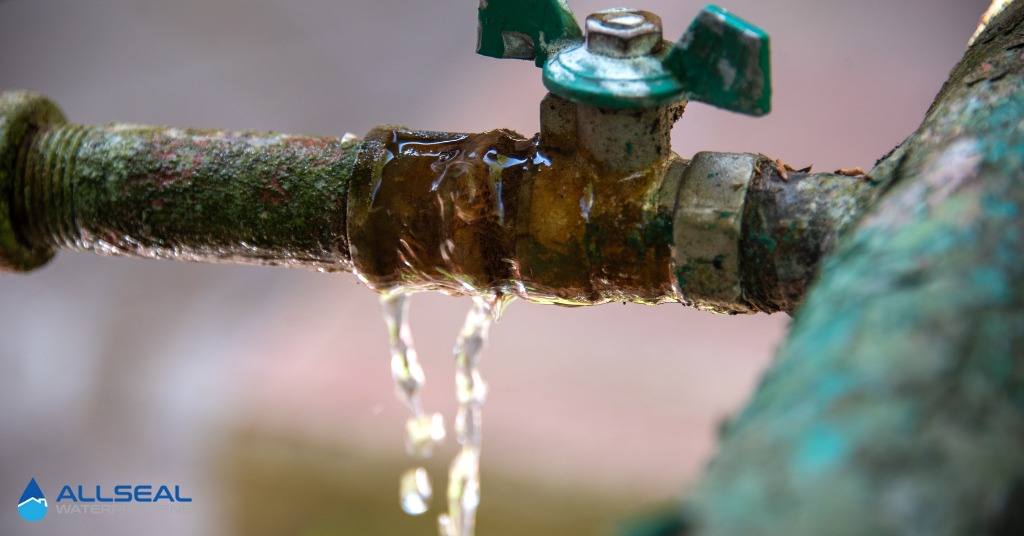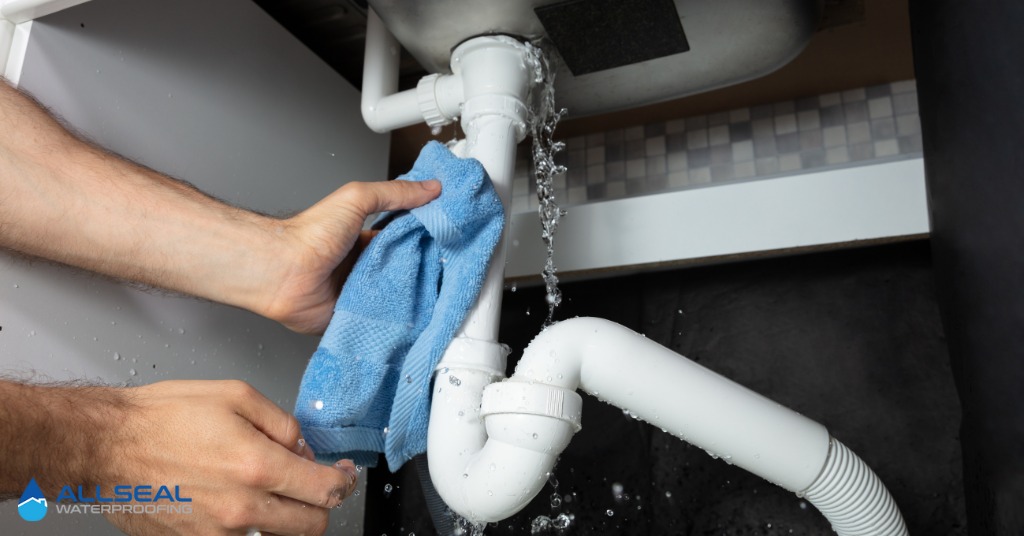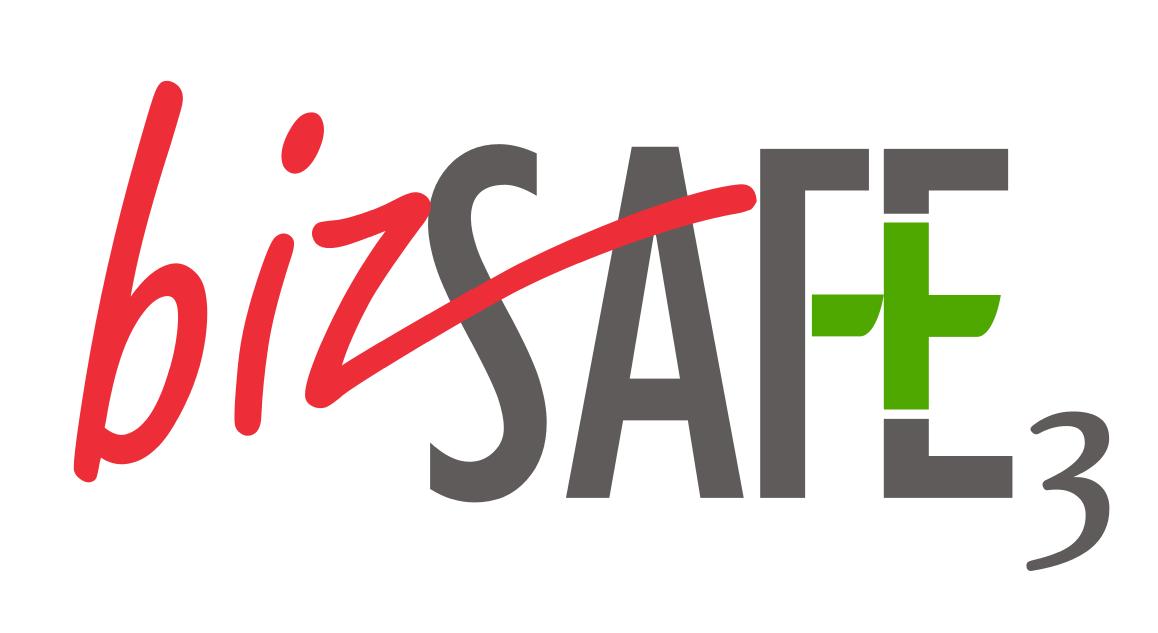
Bathroom leaks are frustrating. They damage your tiles, walls, and even your neighbours’ flats. In Singapore, fixing bathroom leaks properly is very important. Knowing how to fix bathroom water leakage effectively in SG helps you stop damage quickly and save money.
To fix a leak, you first need to find where the water is coming from and then choose the right solution. Some leaks are small and you can fix them yourself. Others are hidden under tiles or inside walls and need a professional to handle.
In this guide, we will explain clear steps, signs to watch for, simple DIY fixes, professional methods, common mistakes, and preventive tips so your bathroom stays safe and dry.
Signs of Bathroom Water Leakage
Leaking water is not always obvious. Sometimes it is hidden behind tiles or under the floor. Check these signs:
- Water stains on ceilings or walls: If you see yellow or brown patches, it could be a leak from upstairs.
- Peeling paint or wallpaper: Moisture makes paint bubble and peel.
- Mould or mildew growth: Black or green spots often mean water is trapped somewhere.
- Loose or hollow-sounding tiles: Tiles that sound empty when tapped may hide water underneath.
- Puddles around fixtures: Water pooling near the toilet, shower, or sink is a clear sign.
- Musty smell: A constant damp smell can indicate hidden leaks.
These signs help you catch water leaks early before serious damage happens.
Common Causes of Bathroom Leaks
Understanding the source is the first step to fixing bathroom leaks. Common causes in Singapore bathrooms include:
- Ageing waterproofing membrane: The layer under tiles can crack over time.
- Failed grout or silicone seals: Old or missing sealant allows water to seep through.
- Leaky pipes: Pipes hidden in walls or under floors can corrode or loosen.
- Faulty fixtures: Running toilets, leaky taps, or shower mixers often cause leaks.
- Poor workmanship: Bad tile installation or poor waterproofing during renovation can cause future leaks.
Knowing the cause helps you choose the right fix.
Here’s How to Fix Bathroom Water Leakage Effectively in SG
Let’s show you some diy and advanced professional bathroom water leakage fixes.
DIY Fixes for Minor Leaks
Some leaks are small and easy to fix without hiring a professional. You can try:
- Leaky taps: Replace worn washers or cartridges.
- Running toilet: Replace the flapper valve or rubber seal.
- Cracked grout or seals: Remove old silicone or grout and replace with new waterproof sealant.
- Temporary pipe leaks: Apply epoxy putty or silicone tape for small cracks.
DIY fixes save money, but they are best for minor problems. Always turn off the water supply before fixing.
Advanced Professional Fixes for Persistent Leaks
Sometimes leaks are more serious. Professional Bathroom Water Leakage Repair Service in Singapore uses advanced methods that don’t damage your tiles:
Polyurethane (PU) Injection Grouting
The Polyurethane (PU) Injection Grouting method is very useful when water seeps through small cracks in walls or floors. The specialist injects a waterproof resin directly into those cracks.
When the resin meets water, it reacts and turns into a strong foam that blocks the path of the leak from inside. It’s quick, clean, and doesn’t require breaking your tiles.
That’s why it’s perfect for HDB flats, where hacking the floor isn’t allowed. The result is a solid seal that keeps water out for a long time.
Flood Infusion Treatment
The Flood Infusion Treatment method is ideal for light to moderate water seepage. The contractor applies a special waterproof chemical over the bathroom surface.
The chemical seeps deep into the concrete and fills up small holes, pores, and cracks that cause leaks. Once dry, it forms a protective layer that stops water from passing through again.
The best part is that it doesn’t need hacking or tile removal, so it’s fast, clean, and affordable. It also helps protect larger areas at once and prevents new leaks from forming.
Hacking and Re-Waterproofing
This Hacking and Re-Waterproofing method for the bathroom is the most complete and long-lasting solution, used when the leak is serious or old. In this process, the old tiles and cement layers are removed to expose the waterproofing membrane underneath.
A new waterproof layer is then applied carefully, followed by fresh tiles. It takes more time and costs more, but it gives a brand-new waterproof base that can last for many years.
In Singapore HDB flats, this work needs a renovation permit and must be done by an HDB-registered contractor. It’s the best choice when other methods no longer work.
How Professionals Identify Hidden Leaks
Professional plumbers or waterproofing experts use special tools and smart methods to find leaks that you can’t see.
- Thermal imaging cameras: These cameras spot damp or wet areas behind tiles and walls by showing temperature changes.
- Moisture metres: These tools check how much water is inside walls, floors, or ceilings to find hidden damp spots.
- Dye testing: Coloured water is used to trace where leaks are coming from, especially in pipes or toilets.
- Pressure testing: This test checks if your pipes can hold normal water pressure without leaking.
These methods help detect the exact problem so the repair can be done properly without breaking unnecessary tiles or walls.
Common Mistakes to Avoid in Fixing Bathroom Water Leakage

Many people make small mistakes that end up making leaks worse or more costly to fix.
- Ignoring small leaks: Even a small leak can slowly damage your bathroom or your neighbour’s flat below.
- Using the wrong sealant: Not every silicone or epoxy is waterproof or strong enough for long-term use.
- DIY for major leaks: Serious leaks, like inter-floor ones, should always be fixed by professionals.
- Using harsh chemicals: Acidic or strong cleaners can eat away grout and silicone seals, which makes leaks return faster.
Preventive Measures to Avoid Future Leaks
After your bathroom leakage is fixed, regular care helps prevent new leaks from appearing again.
- Maintain seals and grout: Check your silicone and grout every six to twelve months and replace them when they look old or cracked.
- Keep the bathroom dry: Use a shower screen, mop up water after use, and don’t let water pool on the floor.
- Inspect pipes and fixtures regularly: Spotting rust, corrosion, or loose fittings early prevents future leaks.
- Avoid DIY harsh treatments: Stay away from strong chemicals that can weaken bathroom waterproofing or seals.
When to Call a Professional Bathroom Water Leakage Repair Service in Singapore
Sometimes, calling a professional bathroom water leakage repair service is the safest and most effective choice.
- Water is seeping between floors in HDB flats.
- Pipes are hidden inside walls or under tiles.
- DIY fixes have failed again and again.
- You see signs like dampness, mould, or cracks that keep coming back.
At Allseal Waterproofing PTE Ltd, we help you find and fix bathroom leaks fast before they cause serious damage. Our experts use proven waterproofing methods to stop leaks and keep your bathroom dry for years.
We inspect your bathroom, find the exact leak source, and repair it using professional methods like PU injection or re-waterproofing. We seal cracks, fix broken joints, and make sure your bathroom stays completely watertight.
Don’t wait for the problem to get worse. Call Allseal today for a free inspection and lasting solution!
Wrapping Up
Fixing a bathroom leak may feel stressful, but it’s not impossible. Once you know how to fix bathroom water leakage effectively in SG, everything becomes easier. Just find where the leak starts, choose the right repair method, and keep up with simple maintenance. Small habits like drying floors and checking seals can save you from big repair costs later.
A dry, clean bathroom not only looks better but also lasts much longer.
| FAQ’s 1. How long does it take to fix a bathroom water leak in Singapore? It really depends on how bad the leak is. Small leaks like dripping taps or loose seals usually take a few hours to fix. But bigger leaks that need waterproofing or hacking can take two to five days because everything needs time to dry and set properly. 2. How much does it cost to repair a bathroom leak in Singapore? The cost depends on what’s causing the leak. Small fixes like changing silicone or seals can be under $100. Non-hacking methods like PU injection or flood infusion usually cost around $300 to $800. If hacking and re-waterproofing are needed, it can go above $1,000, depending on how big your bathroom is. 3. Can I use waterproof paint to stop bathroom leaks? Waterproof paint can protect the surface, but it won’t stop leaks coming from inside the walls or under the tiles. It helps only with surface dampness. If water keeps coming back, you’ll need proper waterproofing to fix the real problem. 4. Why do bathroom leaks keep coming back after repair? Leaks often come back when the main problem wasn’t fixed properly. Sometimes, only the surface gets sealed while the deeper waterproof layer stays damaged. It can also happen if the wrong materials were used or the area wasn’t dry before sealing. 5. Is hacking always needed to fix bathroom leakage? No, not always. Many waterproofing experts in Singapore use non-invasive methods like PU injection or flood infusion. These seal cracks from the inside. Hacking is only needed if the waterproofing layer is very old or completely damaged. 6. How do I know if my upstairs neighbour’s bathroom is leaking into mine? You might see damp patches or stains on your ceiling or walls near the bathroom. The paint may bubble or peel off. If that happens, both you and your neighbour should contact HDB to inspect and arrange repair, since inter-floor leaks usually affect both sides. 7. Can humidity or poor ventilation cause bathroom leaks? Humidity doesn’t directly cause leaks, but it makes small cracks worse over time. Moist air keeps the bathroom damp, which leads to mould and weak seals. Always keep your bathroom well-ventilated by opening windows or using an exhaust fan. 8. Can I shower normally after a waterproofing treatment? No, you should wait at least one to two days before using the bathroom again. This gives the waterproofing time to dry and harden properly. If you use it too soon, the seal might break, and the leak could come back. |

